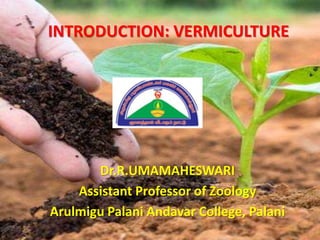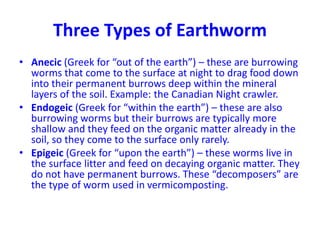The document details vermiculture, including definitions of vermiculture, vermicomposting, and various associated terminology. It describes the life cycle of earthworms, particularly focusing on species beneficial for composting in India and methods for collecting native earthworms. Additionally, it categorizes earthworms into anecic, endogeic, and epigeic types, highlighting their specific habitats and roles in organic waste management.























